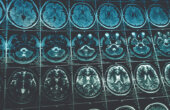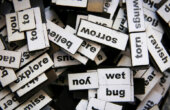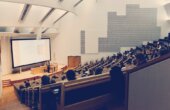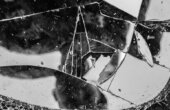Dots Out of Line: On Neuroatypical Curiosity
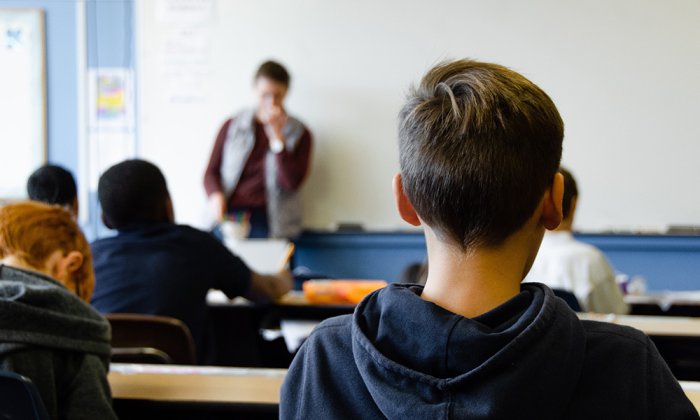
As humans, we pursue our questions in nature and in the city, in the lab and on the dance floor, through spacecrafts and on walks, protesting and in prayer. Of all the spaces that facilitate collective human curiosity, however, perhaps the most paradigmatic are places of education. These are spaces in which we gather to commemorate and to create tracks of knowledge. By turns, we lead and follow one another along the furrows, crisscrossing the world of things known and yet to be known.
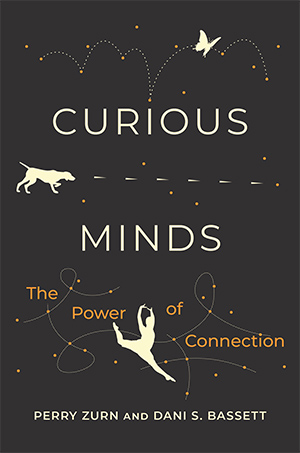
Nevertheless, as academic studies and personal testimonials repeatedly confirm, educational institutions today are consistently threatened with the loss of curiosity, a lagging of wonder, and a dearth of delight in discovery. Too often, compliance and complacency, bureaucratic constraints, and mundane deliverables compromise the environments of creative freedom necessary for the pursuit of knowledge. And far too often, social inequalities, ableism, and disciplinary silos build walls between learners, their potentialities, and their communities. It is for these reasons that learners and educators alike repeatedly ask, By what pathways can the very institutions of curiosity remain curious? How can we imagine learning differently, more equitably?
One of the fundamental problems with mainstream educational practice is that it still largely targets the single student, with a standard mind, through a set curriculum. The fault in our stars is that they fall to dust in our hands when extracted from the constellations and galaxies that lend them meaning and function. Too often, the complexity of the learning environment is lost in favor of the implicitly presumed capacities and needs of the standard student.
Too often, the complexity of the learning environment is lost in favor of the implicitly presumed capacities and needs of the standard student.
Born in 1992 and diagnosed with autism of a “severe” and “nonverbal” type, Naoki Higashida attended a number of educational institutions in the course of his youth, including a neurotypically centered primary school, a special needs junior high, and a distance learning high school. Observing the many ways in which people with disabilities are fast-tracked out of normal life and shuttled into special needs circles (and low-wage jobs, if they are lucky), Higashida, the author of dozens of poems, short stories, and nonfiction books, wanted to make his own choice. After “questioning things” for himself, and identifying his gifts and hopes, he decided to become a writer.
While in school, he had become increasingly frustrated with the steady infantilization and “schoolmaster-type instruction” that denied his creativity and squashed his curiosity. Indeed, scientists and educators alike repeatedly characterize people with autism as lacking any measurable — and therefore meaningful — curiosity. Resisting this narrative in his writing and activism, Higashida repeatedly asserts his own curiosity: “I’m always hungry to learn,” “hungry for knowledge,” he writes in his bestselling memoir “The Reason I Jump”; “I want to grow up learning a million things!” Other autistic people, he says, are much like him in this respect, “constantly challenging and asking questions of themselves.” This should be no real surprise, he writes in a poem called “Curiosity,” given that curiosity is fundamentally human; it “is why we carry on.”
Of course, because the neural structures in Higashida’s mind are atypical, his curiosity functions — and manifests itself — differently. For him, there is a certain absorption that characterizes his interaction with the world. Time and space are nebulous, as are the boundaries of his body and the contents of his mind. Exploration therefore takes on a different timbre and perceptual perturbation a different hue. In greeting the world, Higashida remarks, “details jump straight out,” while objects themselves linger in the background; as such, there is “a world of difference between seeing a thing and knowing what it is.” Coming to know, to recognize, and to engage with things requires shuttling between the present experience and a series of informative memories.
Higashida’s memories, however, are not stored in carefully indexed and chronologically arranged slots. They are a jumble of “dots” that float about “scattershot.” Sometimes he can patiently “fish” for the right one, while at other times it’s like reaching for a star hung “hundreds of millions of light-years away.” His facility in jumping in and out of the sea — or in and out of the galaxy — is a bit of magic, and words help make that magic happen. Communicating via keyboard, Higashida is transformed into a “dolphin,” able to swim and flip in the vast ocean of language, and chatter away with his companions. Through writing, he weaves together, with passion as much as patience, the “connections” between his knowledge and his experience, his own mind and that of others.
If neurotypical memories — and all the things that have been learned — are structured more like an index, what is the architecture of that index? What is its shape, or conversely, how does it lend shape to what is? By what logic are its folds fashioned? In contrast, what happens when one’s knowledge looks more like a school of fish or a galaxy of stars? And what about dots and dolphins? Shape and movement in this case have an entirely different physics. How does one walk that graph? What are the steps by which curiosity moves and how are its paths interwoven?
If neurotypical memories are structured more like an index, what is the architecture of that index?
First and foremost, Higashida’s work testifies to his own curiosity, flush with obsessions and fixations, interests and fascinations. He asserts that his curiosity takes different shapes and functions by a different logic, and that this logic can be beautiful all on its own. His work secondarily enjoins neurotypical people to treat him and other autistic people as “neither a princeling nor a spare part” but rather with compassion. Our capacities and curiosities — our futures, he insists — are “connected” with one another. What does that look like in a space — indeed a world — of learning, where fish curiosities, star curiosities, and index card curiosities sit side by side? How do we engage the world alongside each other and even with one another? What are the markers of a learning environment in which fish and filing systems can equally flourish?
Scholars who study curiosity have paid remarkably little attention to neuroatypical learners, let alone neuroatypical curiosity. Attention to diverse neural networks, however, requires precisely this. The network approach equips us to think much more richly about the validity of different modes of curiosity. Consider a room full of students with a range of learning differences, from dyslexia and autism, to anxiety, depression, and bipolar disorder, or again from hyperactivity and obsessive-compulsive tendencies all the way to Howard Gardner’s multiple intelligences.
Each learner has their own architectures of learning. How wide is that slate of curiosity signatures? So much more could be done to understand and celebrate the often nonstandard ways in which curiosity is expressed. New means of recognizing nonverbal, sensory, and affinity interests are needed in order to honor the curiosity in people who have long been thought incurious. People largely treated as zero-dimensional dots may themselves be masterful dot conductors. Such a project demands a new series of questions. What makes something questionable for this person or intriguing for that one? How are questions differently asked and formulated, generated and shaped? Ultimately, what sorts of information does each seek, in what distinct manners, and resulting in what actions? How is the practice of curiosity variable even within the individual and across timescales? How is each learner’s style of curiosity correlated with their neural structures and sociocultural environments? And how is that capaciousness reflected in the curriculum?
Such work necessarily begins with a commitment foundational to disability communities and disability studies: that disability and neuroatypicality are normal variations in bodyminds and that, as such, people with those variations are equally curious cultivators in the field of knowledge. The emerging field of network neuroscience provides exceptionally useful tools for illuminating the breadth of neural structures and functions across a variety of typical and atypical learners. Its research into attentional capacities, memory processes, brain plasticity, individual differences, and genetic and epigenetic factors has the capacity, moreover, to clarify not only the architecture of the learning organ (i.e., the brain) but also the architectures of learnability itself.
All of this equips us to ask the question, What makes for optimal learning in new ways and optimal learning for whom? From the vantage point of disability theorists, however, neuroatypical learners and their appropriate pedagogies are not meant to be added to the mix but rather to transform the learning process for all. Universal design (originally an architectural concept) puts multidimensional and multisensory learning opportunities at the center of education in order to facilitate access for the broadest swath of minds. Expressly citing differences in brain networks, the universal design framework multiplies educative avenues, whether for curious expression and engagement or for instruction and assessment. Designing for everyone instead of for most, learners and educators alike can enjoy a greater range of knowledge-building practices, atypical or otherwise.
From whatever walk of life students hail, there is a vast range of ways in which each moves through social and conceptual space, and a real variety of walks they take on knowledge networks in any given day. They run, skip, and limp, trudge, wheel, and drag; sometimes they circle, other times they strike out yonder. To teach and to learn in our contemporary moment is to leap onto a scene of struggle over inquiry, how it has been done, is done, and might yet be done. And it is to suddenly have in our hands the capacity to enter the fray and propose what learning might look like, how knowledge might be acquired, and how curiosity might best be practiced. Together, we get the chance to redraw the shape of our worlds.
Perry Zurn is Associate Professor of Philosophy at American University. He is the author of “Curiosity and Power: The Politics of Inquiry” (University of Minnesota Press).
Dani S. Bassett is J. Peter Skirkanich Professor of Bioengineering at the University of Pennsylvania. They are the author of more than 300 scientific research articles in neuroscience, physics, network science, and complex systems science.
Zurn and Bassett are the authors of “Curious Minds,” from which this article is adapted.
